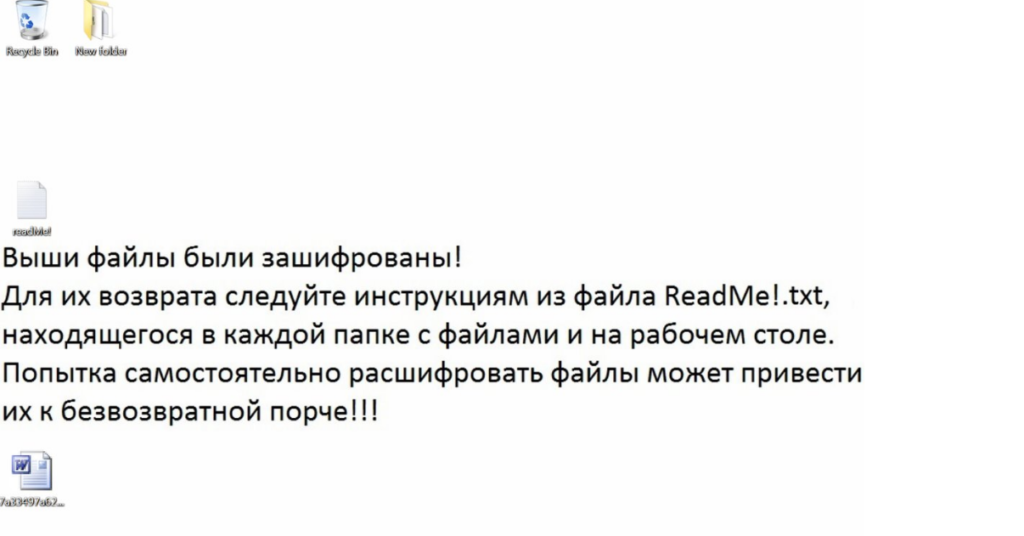The .Block Ransomware is a new malware threat that targets primarily users in the Russian Federation and Russian-speaking countries that renames affected files with the .block extension. Learn more about it in our removal guide.
| Name |
.BLOCK |
| File Extensions |
.block |
| Ransom |
Varies |
| Solution #1 |
You can skip all steps and remove .BLOCK with the help of an anti-malware tool. |
|
Solution #2 |
.BLOCK ransomware can be removed manually, though it can be very hard for most home users. See the detailed tutorial below. |
| Distribution |
Spam Email Campaigns, malicious ads & etc. |
.Block Ransomware Description
The .Block Ransomware is a new malware strain that is under an active investigation by cyber security experts. The reports so far indicate that the virus targets mainly users in the Russian Federation and Russian-speaking countries. Upon infection the virus follows the typical ransomware behavior by encrypting target user files and then crafting a ransom note with the file name “readME!.txt”. All compromised files receive the .block extension.
The ransomware note is written in Russian and its contents reads the following:
Your files have been encrypted!
To restore them follow the instructions located in the ReadMe!.txt file which is found in every folder with files and on the desktop.If you try to decrypt the files yourself they may be permamently damaged!!!

.Block Ransomware Distribution
There are currently very few malware samples which have been captured by the security analysts. As such it is very difficult to determine the primary distribution method. However we assume that its spam emails campaigns.
.BLOCK Ransomware Removal
For a faster solution, you can run a scan with an advanced malware removal tool and delete .BLOCK completely with a few mouse clicks.
STEP I: Start the PC in Safe Mode with Network
This will isolate all files and objects created by the ransomware so they will be removed efficiently.
-
1) Hit WIN Key + R

- 2) A Run window will appear. In it, write “msconfig” and then press Enter
3) A Configuration box shall appear. In it Choose the tab named “Boot”
4) Mark “Safe Boot” option and then go to “Network” under it to tick it too
5) Apply -> OK
Or check our video guide – “How to start PC in Safe Mode with Networking”
STEP II: Show Hidden Files
-
1) Open My Computer/This PC
2) Windows 7
-
– Click on “Organize” button
– Select “Folder and search options”
– Select the “View” tab
– Go under “Hidden files and folders” and mark “Show hidden files and folders” option
3) Windows 8/ 10
-
– Open “View” tab
– Mark “Hidden items” option

4) Click “Apply” and then “OK” button
STEP III: Enter Windows Task Manager and Stop Malicious Processes
-
1) Hit the following key combination: CTRL+SHIFT+ESC
2) Get over to “Processes”
3) When you find suspicious process right click on it and select “Open File Location”
4) Go back to Task Manager and end the malicious process. Right click on it again and choose “End Process”
5) Next you should go folder where the malicious file is located and delete it
STEP IV: Remove Completely .BLOCK Ransomware Using SpyHunter Anti-Malware Tool
SpyHunter anti-malware tool will diagnose all current threats on the computer. By purchasing the full version, you will be able to remove all malware threats instantly. Additional information about SpyHunter / Help to uninstall SpyHunter
STEP V: Repair Windows Registry
-
1) Again type simultaneously the Windows Button + R key combination
2) In the box, write “regedit”(without the inverted commas) and hit Enter
3) Type the CTRL+F and then write the malicious name in the search type field to locate the malicious executable
4) In case you have discovered registry keys and values related to the name, you should delete them, but be careful not to delete legitimate keys
Further help for Windows Registry repair
STEP VI: Recover Encrypted Files
-
1) Use present backups
2) Restore your personal files using File History
-
– Hit WIN Key
– Type “restore your files” in the search box
– Select “Restore your files with File History”
– Choose a folder or type the name of the file in the search bar

- – Hit the “Restore” button
3) Using System Restore Point
-
– Hit WIN Key
– Select “Open System Restore” and follow the steps

STEP VII: Preventive Security Measures
-
1) Enable and properly configure your Firewall.
2) Install and maintain reliable anti-malware software.
3) Secure your web browser.
4) Check regularly for available software updates and apply them.
5) Disable macros in Office documents.
6) Use strong passwords.
7) Don’t open attachments or click on links unless you’re certain they’re safe.
8) Backup regularly your data.
SpyHunter anti-malware tool will diagnose all current threats on the computer. By purchasing the full version, you will be able to remove all malware threats instantly. Additional information about SpyHunter / Help to uninstall SpyHunter



